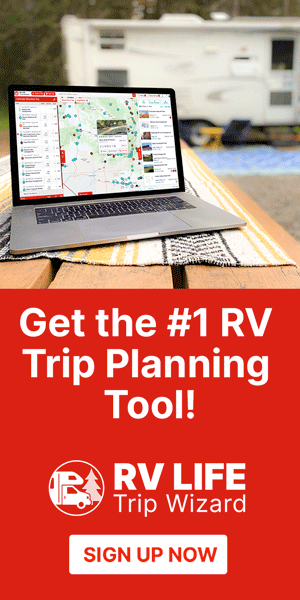
A Week of Maintenance, Mayhem, and Miles of Smiles in Rock Springs
If you’ve ever wondered whether RV rallies are worth your time, let me give you a peek into the week I’ve had parked at the Sweetwater Events Complex in Rock Springs, Wyoming. Spoiler alert: rallies are absolutely worth it—not just for the community, but for the chance to give your rig (and tow car) some much-needed TLC.
? The Water Heater That Tried to Kill Me

Let’s start with the big one. Bertie Bea, my trusty Tiffin Allegro Open Road 34PA, had her Suburban water heater cleaned out by my friends at Kleen Tank of North Carolina—a trusted partner of the Wandering Gypsy RV Life. What came out of that tank looked like I’d been farming kidney stones in there. I mean it. The calcium buildup was so bad, I expected a call from a geology professor asking to study it.

They gave me a D grade on the tank… and only spared me an F because there wasn’t corrosion. (Thanks for the mercy, folks!) Moral of the story? Don’t wait a year between cleanings like I did.
?️ Roadmaster Saves the Day

Rallies like this one often come with bonus perks—like free safety inspections from manufacturers. I took advantage of one by Roadmaster, who checked my tow bar and discovered an issue I hadn’t noticed. They’re fixing it under warranty, and while they’re at it, Rosie (my 2016 Chevy Equinox tow car) is getting a brand-new charge line and plug installed.
Why? Because dead batteries while towing are about as fun as a surprise hailstorm in the Badlands. Hopefully, this upgrade puts those issues in the rearview mirror.
?️ Tackling the Wind With ShadePro

Now let’s talk about Wyoming wind. You know you’re in the West when you step outside and feel like you’re in a wind tunnel testing facility. Slide toppers? Flapping like flags at a rodeo parade.


Enter: ShadePro—another one of my trusted partners. Not only did they tighten the tension on my slide toppers to stop the flapping, but they’re also installing new interior shades inside Bertie Bea. Cooler, quieter, and much easier on the eyes when the sun’s beating down—these shades are going to be a game-changer.
?️ Tech Talk & Podcasting on the Road
I’ve also been here representing TechnoRV for the launch of our brand-new audio and video podcast:

? On the Road with TechnoRV
We’ve been capturing rally moments, sharing tech tips, and talking with vendors and RVers alike. You can find the show on your favorite podcast platforms—and of course, on YouTube.
If you’re even thinking about upgrading your gear or learning how to get more out of your RV tech, TechnoRV’s seminars at these rallies are worth the stop alone.
? Scavenger Hunts and RV Camaraderie
Oh—and if you’re looking for a little fun, the Wandering Gypsy RV Life team is joining the learntorv.com scavenger hunt. It’s open to anyone who RVs and is the perfect mix of friendly competition and creative chaos. Think campground hide-and-seek with bonus points for ingenuity and snacks.
Final Thoughts
So here’s the big takeaway: rallies aren’t just for the extroverts or longtime RVers. They’re for anyone who wants to take better care of their rig, learn from the pros, and connect with a welcoming community that understands why we live this lifestyle in the first place.
In one week, I handled overdue maintenance, upgraded my tow setup, made Rosie road-ready again, learned new tips, and even had time for a few laughs and campfire stories.
And that, my friends, is what the RV life is all about.
Until next time—
Stay curious. Stay rolling.
And remember:
✨ “Not all who wander are lost.”
Want more behind-the-scenes rally content, gear tips, and RV stories?
? Subscribe to our YouTube Channel
? Listen to the Wandering Gypsy RV Life podcast on all major platforms
? Follow along on Instagram and Facebook
? Check out TechnoRV’s resources and podcast at TechnoRV.com









